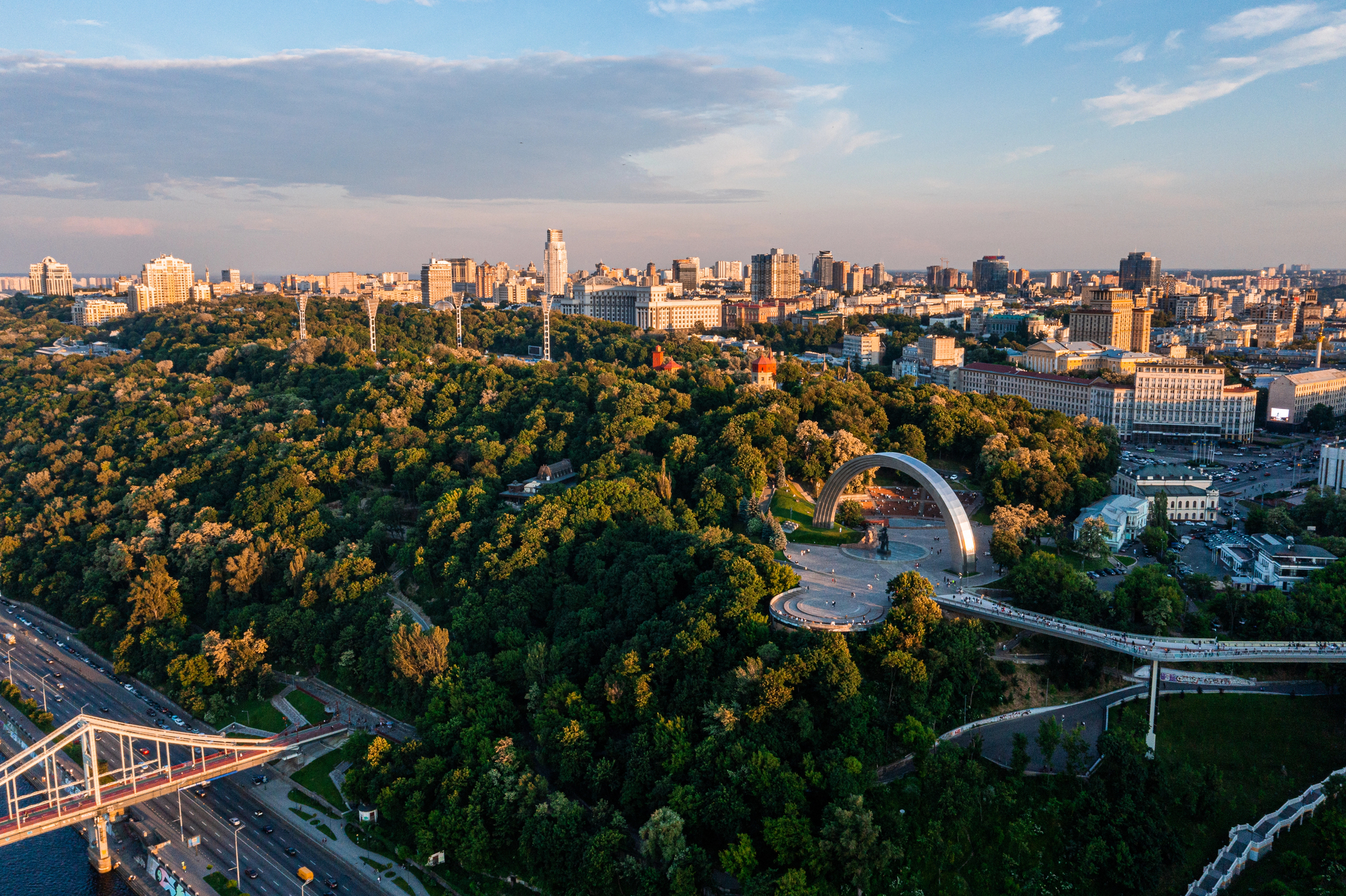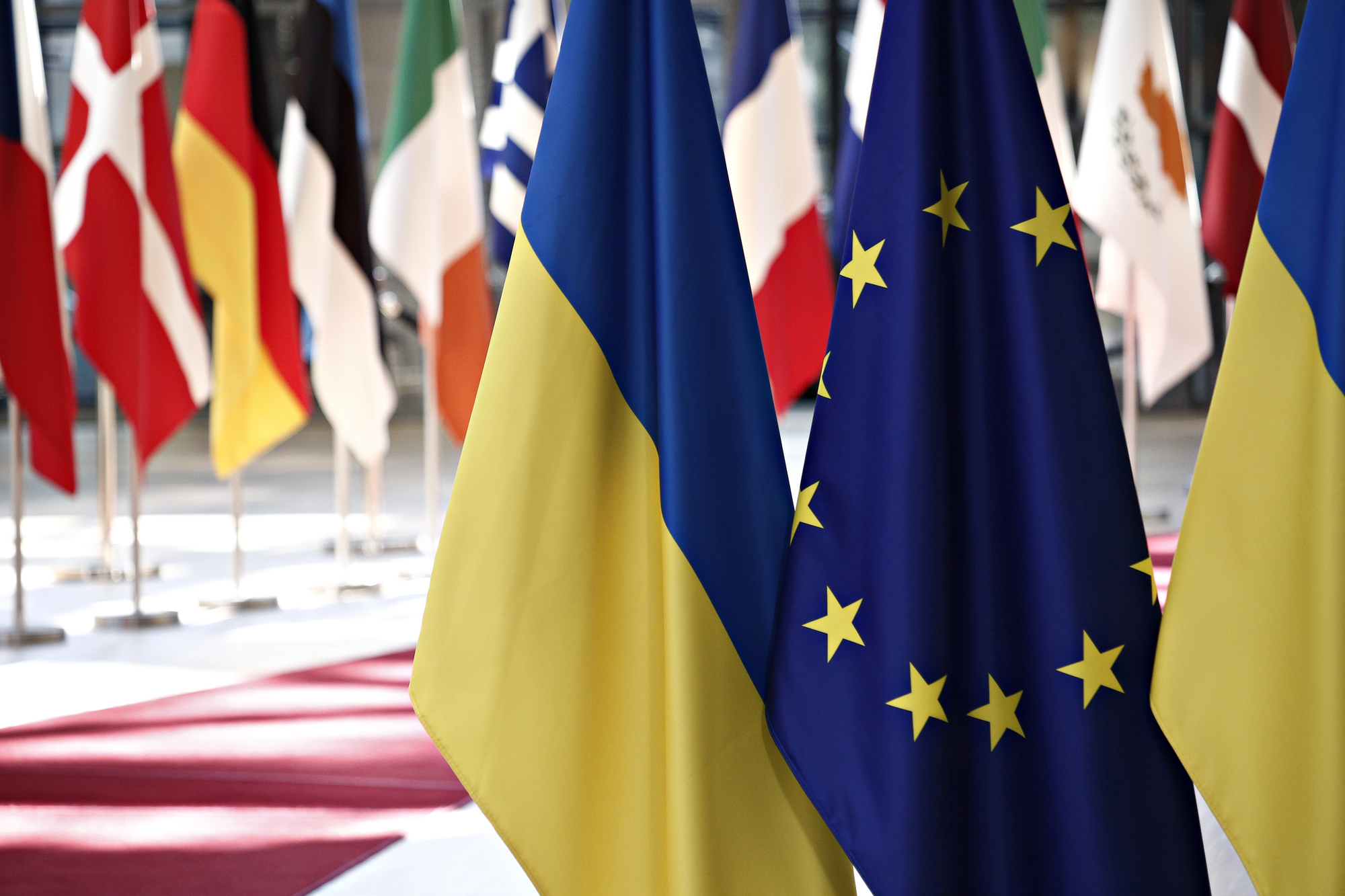Ukraine is an important player in the world grain market. Until February 24, 75% of grain produced in Ukraine was exported to Europe, Asia, and North Africa, resulting in Ukraine receiving a fifth of its annual export revenues. 90% of grain and oil crops were exported through the Black Sea ports. Ukrainian grain not reaching its destination due to the blockade of the ports by the Russian troops put global food security at risk.
To support Ukraine and create alternative routes for exporting agricultural products and importing essential goods, the European Commission established on May 12 the Solidarity Lanes initiative. Its action plan included the immediate elimination of transport delays on Ukraine’s western borders and the improved rail, road, and waterway connections between the EU, Ukraine and Moldova in the medium and long term.
The plan’s priority measures and the Initiative’s first achievements
The European Commission (EC) outlined the following six priority actions under the Initiative:
Providing additional freight rolling stock, vessels, and trucks
At the beginning of June, two platforms were created: the EU-Ukraine business matchmaking platform and the Grainlanes to join forces to make additional vehicles available. Although they operate, they cannot resolve the lack of specific grain cars and trucks in a technical condition that would meet EU requirements due to significant differences in Ukrainian needs and European capabilities.
The EC also planned to designate contact points (one-stop-shops) for EU member states, allowing the parties to report logistical chain problems. They were not created, and operational interaction occurs at the level of individual players or working groups (e.g., the Ukrainian-Romanian customs working group initiated by the EU Advisory Mission), which indicates insufficient coordination of the process.
Increasing the capacity of transport networks and transshipment terminals
The EC called on the Initiative participants to route the export of Ukrainian products through the corridors with the biggest capacity. In addition, it had to identify key centers of transshipment and gauge changes at the EU borders and outside Ukraine. But today, logistics costs are the decisive factor in choosing transport corridors for the exporters and buyers of Ukrainian goods. Therefore, cargoes continue to move in the direction of the shortest but busiest transport corridors (particularly to the seaports of Poland and Romania).
To move quickly from transshipment centers to EU ports, the EC called on the US states’ infrastructure managers to ensure sufficient availability of rail slots for Ukrainian cargoes. It also announced signing the agreement liberalizing road transportation between Ukraine and the EU (it was signed at the end of June). Liberalizing road transportation (the so-called “transport visa-free regime”) eliminated the need for Ukrainian carriers to obtain bilateral and transit transport permits to EU countries. Since October 1, Ukraine joined the international customs information exchange system NCTS (the so-called “customs visa-free regime”), which also facilitated cross-border movement for trucks thanks to a simplified procedure for declaring goods and faster customs clearance.
There is still a critical shortage of rail slots in the EU transportation schedules, despite the EC’s demands they be provided unconditionally. But there are objective reasons for this since the EU transport network cannot handle the entire amount of Ukrainian exports.
The EC had to provide proper insurance coverage for the carriers’ risks to encourage European operators to send their transports to Ukraine. However, this has not yet been fully worked out. Among the EU member states, only Poland’s government decided to expand the possibilities of risk insurance in bilateral trade with Ukraine. Because of this, Ukrainian companies often have to independently cover the country’s logistical needs.
Optimizing customs operations and other inspections
The European Commission recommended streamlining the processes. These include non-essential customs procedures, issuing export and veterinary and phytosanitary product quality certificates, ensuring sufficient personnel and round-the-clock service at border crossing points (BCPs), and moving inspections beyond the border (e.g., seaports or cargo destinations), where possible.
In the Initiative’s early days, there were delays with the border control procedures, due in particular to different work schedules of the Ukrainian and EU inspectors and an insufficient number of phytosanitary and veterinary (in Poland, also sanitary) control inspectors in Ukraine and the neighboring countries. The lack of proper freight sorting (segregation) on the Ukrainian side significantly exacerbated the problem. However, the issue was resolved thanks to the disease control and prevention centers’ efforts (notably, the State Service on Food Safety and Consumer Protection). Currently, agreements have been reached to provide the round-the-clock operation of control services at all BCPs and simplify control procedures for all types of Ukrainian transit cargo as much as possible. Another reason for the delays is the lack of service areas at the border, resulting in the drivers often parking near the border after passing the inspection to fulfill the driving time and rest requirements according to tachographs. However, most of the causes for delays lie far beyond the borders, with the time taken to cross them being only the natural consequence.
Provision of storage of goods on the territory of the EU
The EC planned to assess available temporary storage capacity for Ukrainian grain in the EU and coordinate with member states to secure more capacity near the BCPs, stations along the broad gauge lines, and at EU seaports. After all, part of Ukraine’s storage capacity is inaccessible or destroyed.
The EC conducted the assessment and built additional facilities to temporarily store grain, particularly on Poland’s territory. But these capacities turned out to be insufficient, and in late August, Ukrainian agribusinesses bought up nearly all disposable grain storage facilities available in the world market. In September, representatives of Polish logistics operators called on the government to develop a state program to create border infrastructure for storing agricultural products.
Increasing the infrastructure capacity of new export corridors
In addition to urgently eliminating transport delays, the EC outlined medium to long-term measures to increase the export corridors’ capacity. This includes, in particular, urgently restoring the BCPs with double gauge (Ukrainian 1,520 mm; European 1,435 mm), expanding the capacity of gauge changing devices, and transport infrastructure at the BCPs.
In early July, Romania restored the railway connection of the Galats river port on the Danube to Ukraine to speed up the export of Ukrainian grain. At the end of August, Ukrzaliznytsia (UZ) restored several railway routes to the border with Romania. After repairing the tracks on Romania’s territory, two border crossing points between the countries will resume operation. At the same time, under a pilot project, the railway connection between Ukraine and Moldova was restored ahead of schedule. Regarding automobile roads, the most significant changes occurred at the Krakowiec-Korczowa highway on the Polish border, where the number of truck lanes had been increased from 4 to 10, and additional pavilions for customs and traffic control had been created.
Establishing new infrastructure connections in the framework of Ukraine’s reconstruction
According to the EC, the assessment of future needs had to focus on upgrading the cross-border connections and optimizing and modernizing transport flows (road-road, road-rail, and rail-rail) between the EU and Ukraine, developing new TEN-T transport corridors connecting the EU to Ukraine and Moldova, and improving the connectivity and navigability of on the Rhine-Danube corridor.
The European Commission updated the TEN-T indicative maps in late July by adding three Ukrainian logistics routes. The EC is also working with the EU member states on the possibility of implementing the Adriatic transport routes. Other projects for developing Ukraine-EU infrastructure relations are under discussion.
According to Europe without barriers analysis, the Initiative’s main interim achievements on the part of the EC were the development of Ukraine-EU logistics platforms, the “transport visa-free regime,” and unprecedentedly simplified customs and control procedures for crossing the border with EU member states. As for Ukraine, it fully joined the common transit system, positive changes were made at road control points, and railway connections in several directions with Moldova and Romania were restored.
Half a year of Solidarity Lanes: results and problems
November 11 marked the first six months of implementing the Initiative. According to EC data, the Initiative contributed to
- exporting over 15 million tons of grain, oil crops, and related goods from Ukraine (together with the Black Sea export of about 25 million tons. Overall, it is half as much as last year);
- exporting over 15 million tons of other products (ore, iron, steel, land, and timber);
- generating more than 15 billion euros for Ukrainian farmers and businesses.
However, the existing transport corridors’ capacity has already reached its maximum against the backdrop of high logistics costs. Arrangements regarding the continuation of the Grain Initiative are very shaky. Therefore, according to the EC, the Initiative’s next steps should be the development of new transport routes. For this purpose, on November 11, the EC published a joint declaration of the EC, the Czech Republic, Poland, Romania, Slovakia, Moldova, Ukraine, the EIB, the EBRD, and the World Bank Group to mobilize 1 billion euros for Solidarity Lanes by the end of 2023. However, according to Europe without barriers analysis, besides the infrastructural problems, there are organizational issues (see below) in implementing the Initiative, which might prevent the implementation of the announced plans.
Trans-border capacity
As of the end of November, the movement of large cargoes across Ukraine’s western borders was ensured by 13 railroad and 32 road control points on the borders with the EU and Moldova, 3 Danube ports, and 3 Black Sea ports unlocked as part of the Grain Initiative. However, in some places, one had to wait seven days to cross the border via automobile roads and 25 days via railway routes.
As mentioned above, in the Initiative’s early stages the traffic jams and low trans-border capacity were caused by a discrepancy between the work schedules and the number of phytosanitary and veterinary control inspectors in Ukraine and the neighboring countries. However the reasons currently lie far beyond the borders.
If we look at railway transportation, the total capacity of the Polish and Romanian ports where Ukrainian exports predominantly go to today was 34 million tons in 2021. It is only a quarter of the Ukrainian Black Sea ports’ volumes before 2022, as they used to secure 120-140 million tons of yearly cargo exports. In addition, European ports were designed to meet the EU member states’ national needs and do not have much spare capacity. Their load has been increasing due to coal imports to EU countries, which leaves even fewer opportunities for Ukrainian grain. The UZ representatives’ proposal regarding the allocation of quotas for the transshipment of Ukrainian cargo in European ports does not find support. It could be that a way out is to use the Lithuanian port of Klaipėda, which now has more capacity due to suspending cooperation with Russia (50 million tons of various cargoes per year). Previously, Ukraine transported goods to this port through Belarus using the broad-gauge railway. However, developing this route today would require either a double change from broad gauge to narrow gauge and vice versa (Ukraine – Poland – Lithuania) or building a broad-gauge line running from Ukraine to the border with Lithuania through Poland’s territory. The construct might be appropriate considering the post-war future, as changing climatic and weather conditions indicate a westward agricultural production shift in Ukraine. Therefore, the demand for this transport route will only grow.
In addition to using different gauges in Ukraine and the EU, there is another problem: a discrepancy between the dimensions of Ukrainian rolling stock and the technical requirements for foreign railways. That means an even narrower range of export routes from Ukraine. Europe cannot significantly help Ukraine in this because of a lack of rolling stock and train slots. For instance, 9 thousand grain wagons operate on the territory of the EU, while Ukraine operates about 25 thousand of them. Accordingly, the EU’s railway network and transportation schedules are designed for traffic at least three times less considering its domestic freight volumes and the Ukrainian grain cargoes.
Organizational gaps
The EU has a liberalized rail freight transport market. Therefore, about ten competing state and private carriers competing can simultaneously work at the same border crossing point. The coordination between them is far from ideal. Because of this, the tracks are often blocked while wagons belonging to one of them wait for cargo. There are also rare cases of routes being blocked by empty wagons abandoned after unloading. This situation exists on both sides of the border.
Previously, there was also a problem with foreign carriers who refused the early confirmed shipments after their arrival. UZ introduced restrictions on confirming cargo volumes for foreign carriers based on the previous month’s figures to address it. Later, this rule was lifted, and fines were introduced for refusing cargo. On the Ukrainian side, there are cases when wagons arrive at the border, but the buyers are not there yet. In other words, the wagons are used as product storage facilities blocking train parking places.
One of the organizational problems is the defects in transportation planning on the part of UZ, which is done manually, delivered late to cargo owners, and does not match the foreign carriers’ capabilities. There is also a problem with providing trains “when ready”. Although it allows transporting a large number of wagons from more than 1,200 railway stations in Ukraine with one rolling stock, the list of cargoes and the exact time of their arrival at the border cannot be determined in advance. In addition, they mostly do not meet European carriers’ strict schedule deadlines.
A unified control system that would include both Ukrainian and European networks could increase transportation efficiency. Tracking the movement of goods to the border and after crossing it would allow all participants of the logistical chain to trace the cargo’s whereabouts, speed of movement, locations, and reasons for delays. Electronic document flow would replace the exchange of telegrams and significantly improve interactions on different sides of the border.
Economic expediency
Neither EU-based nor Ukrainian businesses are ready to diversify routes seeking the shortest and most profitable ways of transporting products instead, overloading some BCPs and leaving others empty. Thus, according to UZ data, the average load of railway stations in November was about 50%.
However, waiting in line costs a lot daily, and the shortest route does not always mean the cheapest. Many agrarians understand this from their experience and will send freight to all available railway BCPs that provide grain cargo control services. For example, MMC (mining and metallurgical complex) enterprises continue using only some of them. One reason is that they cannot change routes without the agreement of EU buyers. Therefore, communication must be enhanced on both sides of the border to inform about the benefits of a more even distribution of goods at BCPs.
Delays at the border
Introducing common border customs control between Ukraine and Poland, and later with other EU countries, can significantly increase the effectiveness of border inspections.
Lack of communication and coordination
On the EU side, the Solidarity Lanes Initiative is overseen by the European Commission’s Directorate-General for Mobility and Transport. Therefore, on the Ukrainian side, its visa-a-vis is expected to be the Ministry of Infrastructure (currently the Ministry of Development of Communities, Territories, and Infrastructure – ed.) which is responsible for the overall logistics development. But the official documents and open sources do not specify many participants’ clearly defined functions and degree of involvement. No documents establish the responsibility for implementing the Initiative. No specific ministry, department, or advisory body is designated to coordinate with all involved parties from the Ukrainian side. Ukraine needs to resolve this issue.
Conclusions
According to Europe without barriers analysis, one of the Solidarity Lanes Initiative’s goals was to align the needs of the Ukrainian side and the capabilities of the EU and Moldova in ensuring the movement of goods through Ukraine’s western border. During the six months of its implementation, the parties became aware of a discrepancy between the needs and capabilities, primarily due to different port capacities and technical parameters of the transport network and vehicles on both sides of the border. Another significant problem is a lack of coordination and communication, which could slow the implementation of investment projects announced by the EC.
On the one hand, there is a delay on the part of the EC in resolving many issues. This is because a significant portion of competencies is in the hands of the member countries, looking after their national interests. At the same time, partner states sometimes want to do more for Ukraine but run into cumbersome European regulations. On the other hand, the absence of a national coordinating body and clearly defined stakeholders in Ukraine leads to duplicate functions of the Initiative’s participants, making it challenging to determine its successes and shortcomings.
Therefore, today the Initiative looks more like an umbrella for the cooperation of the EU member states, Ukraine, and Moldova, encompassing many diverse activities rather than a clearly structured, integral project. In addition to a lack of understanding of funding mechanisms and instruments, the power and opportunities to delegate them on both sides of the border could hamper investment in infrastructure development.
Attention
The author doesn`t work for, consult to, own shares in or receive funding from any company or organization that would benefit from this article, and have no relevant affiliations



